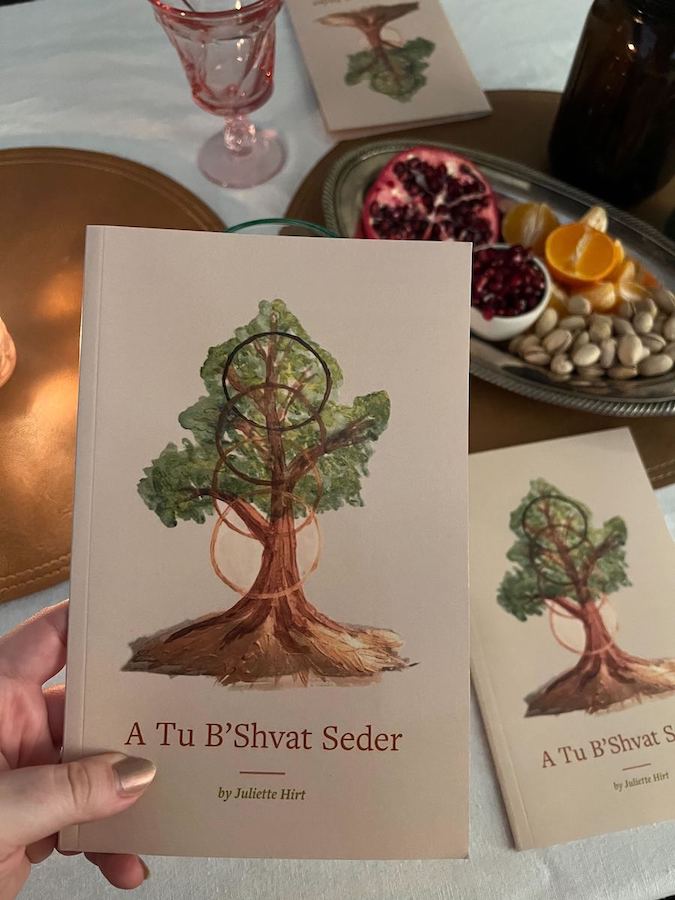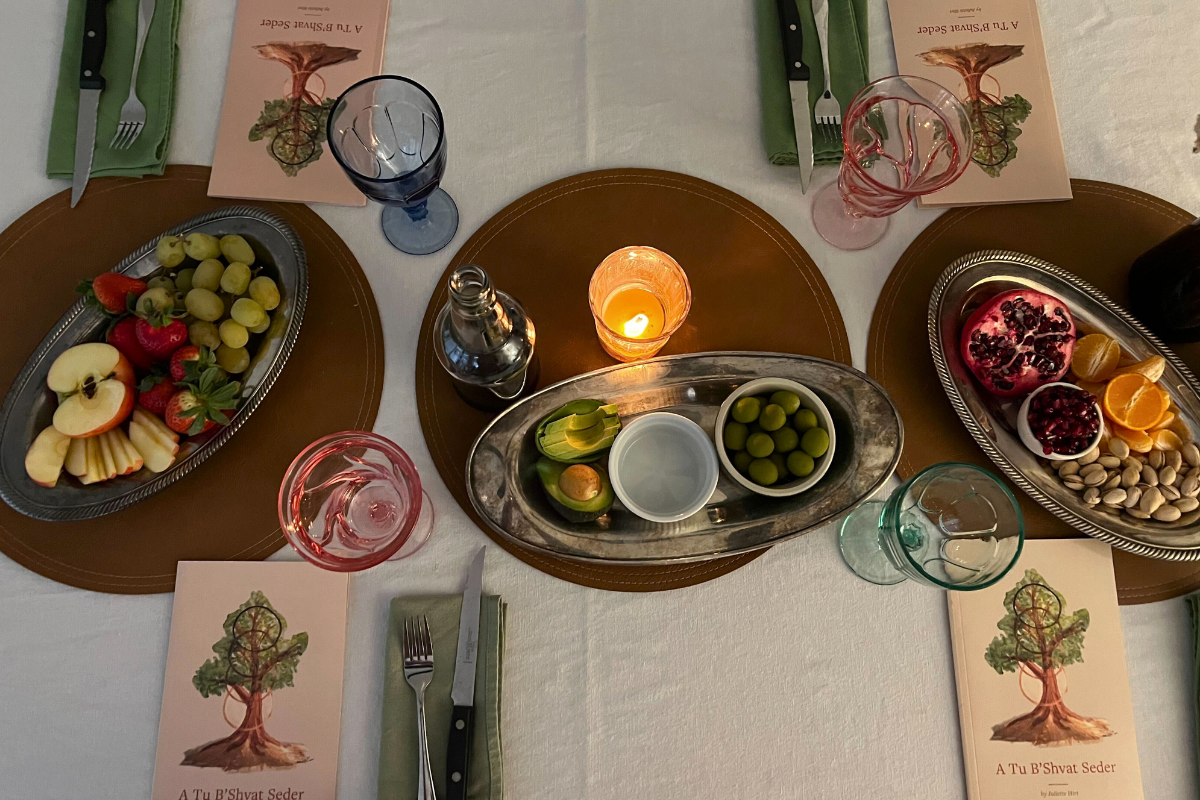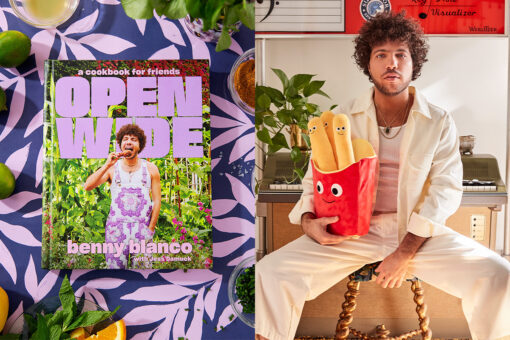Growing up, my family celebrated all the major Jewish holidays. My dad hosted our Passover seder and took pride in researching and planning beforehand, always introducing new facts and open-ended questions to our lengthy meal. My mom hosted Yom Kippur break fast, usually inviting at least 40 people over to enjoy her home-cooked desserts and gorgeous bagel spreads. We diligently celebrated Hanukkah, Purim, Rosh Hashanah. Shabbat was a special evening in our house. If it was a Jewish holiday, we participated in ritual and commemorated it.
But one holiday I’d never celebrated before was Tu Bisvhat. That is, until I married my wife.
My wife was not born Jewish, but she’s currently in the process of converting. Last year she started taking an intro class on Judaism, and she came home one day completely flustered.
“Babe!” she exclaimed. “Why didn’t you tell me it’s Tu Bisvhat this week?! How will I have time to prepare for the seder?”
I hated to disappoint the woman I adore, but I had to break it to her: “Well… I actually had no idea Tu Bisvhat was this week. And… I’ve never had a Tu Bisvhat seder! I didn’t even know they were a thing.”
One of the coolest things about being married to a person who is converting is that I feel like I am relearning Judaism with her. Because I grew up Jewish, so many rituals and traditions just sort of happened, like background music. I liked them (or as a child I was bored during them tbh), but I didn’t think to investigate any more thoroughly. We perform tashlich during the High Holidays. We say the prayers over the candles, wine and challah on Shabbat. There’s a ketubah at the wedding. That’s life, I thought. But when someone is learning about a religion for the first time, especially someone as inquisitive as my wife, it provides an opportunity to explore the religion — in this case, Judaism — more deeply than ever before.
Because we both love learning, we often use these opportunities to create new traditions together. This time, however, my wife decided she would make it her special project.
“I’m going to throw us a Tu Bishvat seder,” she told me confidently. The woman has never met a task she feels she cannot do. I told her I was excited and to let me know if she needed anything. “Nope,” she said. “I got this.”
First she ordered some beautiful Tu Bishvat hagaddahs. The version she picked out, “A Tu B’Shvat Seder” by Juliette Hirt, is filled with gorgeous images, plenty of poetry and detailed instructions for leading the seder. Divided into five parts — Initiation, Root, Trunk, Branch and Bounty — and instructing us to drink four cups of wine over the course of the meal — white, pale pink, deep pink and red — I was immediately sold on the artistry and the intention-setting of it all.

Next she put together her shopping list. Fruits and nuts with hard, inedible exteriors and soft edible insides (baby mandarins, pistachios), fruits and nuts with soft exteriors and a hard pit inside (olives, avocados, plums) and fruit that is eaten whole (strawberries, grapes, almonds). She also got fresh flowers and eucalyptus branches for decoration. When decorating the table, she used candles that we already had (both our Shabbat candlesticks and some witchy Earth candles from our favorite local shop), a zine one of our friends in New York made just for the holiday, the hagaddahs and a floral print platter filled with abundant fruity bounty.
It was a tiny seder — just the two of us and her mom, who was visiting by coincidence — but it was one of the most special Jewish rituals I’ve ever participated in. The fact that my wife, who is so new in her Judaism journey, found this smaller holiday and felt called to ritualize and celebrate it on her own terms, moved me deeply. I felt so lucky to be invited to participate in her very first Tu Bishvat celebration — and what made it even more special was the fact that it was my very first Tu Bishvat celebration, too.
This year, we hosted our second Tu Bishvat seder — the second one for both of us, though I have identified as Jewish for many more years than she has. It’s still a holiday my wife is in charge of; we both like it that way. A few weeks ago she pointed out Tu Bishvat on our shared calendar and penciled in “seder.” She invited two of our closest friends this time around, feeling a bit more confident after the success of last year and reveling in any excuse to celebrate Jewish joy with our chosen family.
The seder was a delight. I spatchcocked a chicken for the first time (10/10, would recommend) and my wife decorated the table just as beautifully as last year. It was extra special to have other Jews with us to celebrate, and we took turns sharing our intentions for the coming year, laughing about the mundane minutiae of existence and sharing the challenges we’re all experiencing being Jewish in this moment.
Part of being a Jewish adult, to me, means deciding how to practice this religion I love and was born into. Sometimes that means introducing my wife to the traditions I grew up with, and sometimes that means my wife introduces new traditions to me. Together, we’re creating a Jewish life that reflects our family, and I couldn’t be more grateful that we include a Tu Bishvat seder amongst those practices.
Welcome to Tree Week! In the days surrounding Tu Bishvat 5784, we at Hey Alma are celebrating all things tree and natured-related. Check back in all week for more on the special Jewish connection to our planet.




